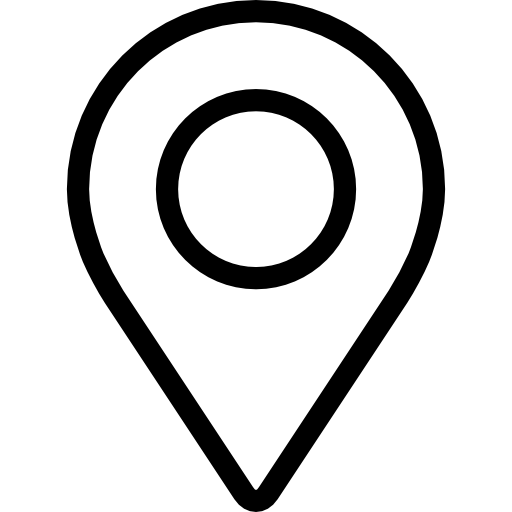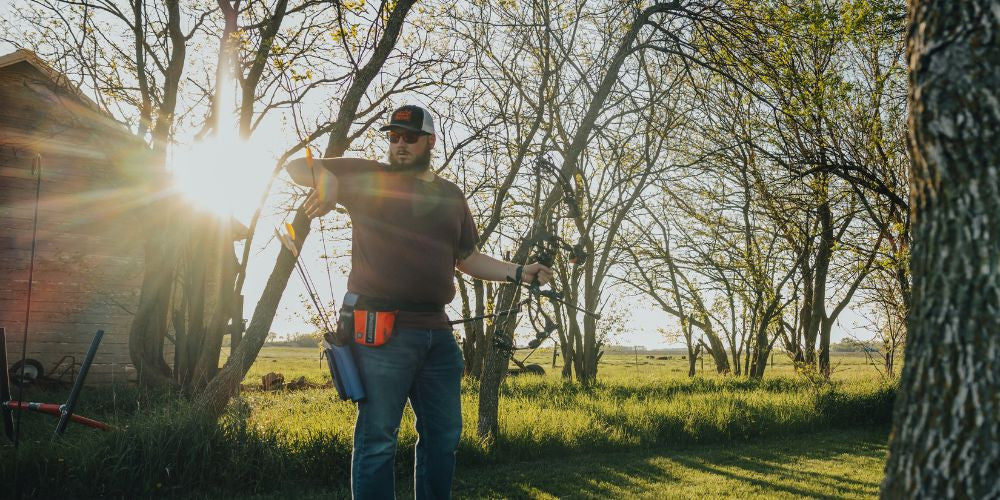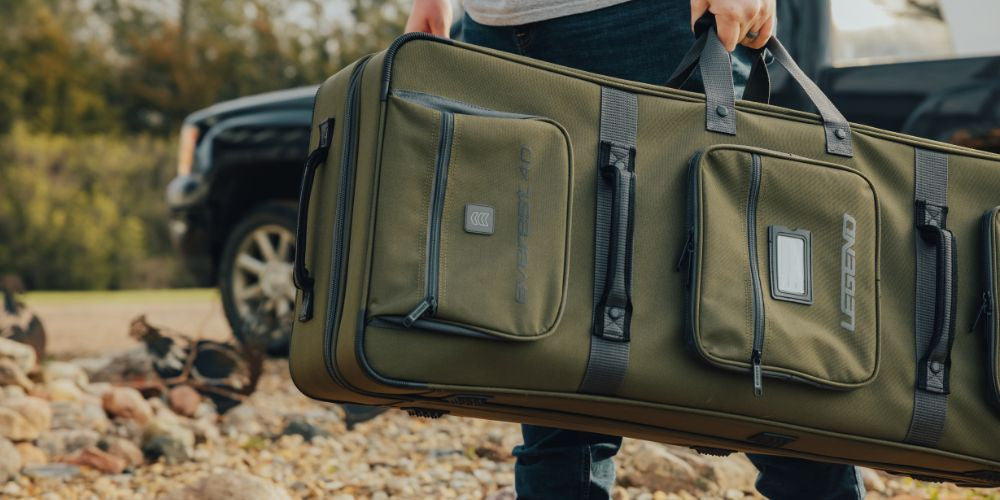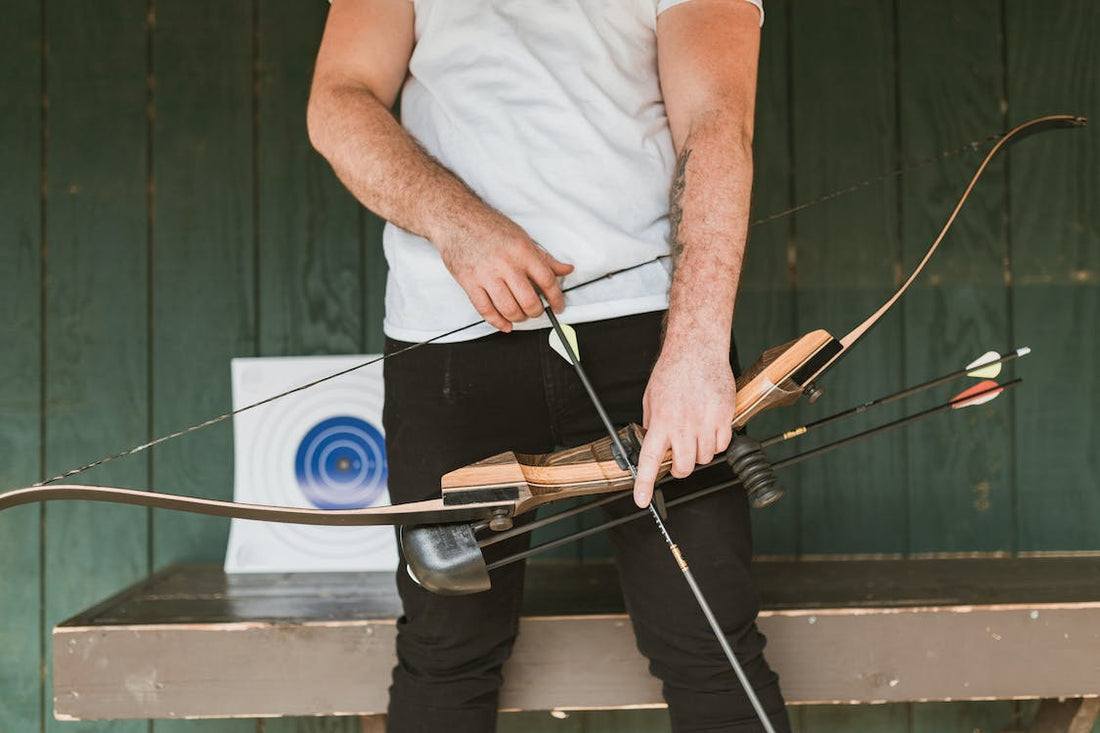If you are planning on taking up archery, you need to know a thing or two about how to hold an arrow. It all comes down to finger placement and bow grip, and this post will explain exactly what to do when using a recurve bow.
A recurve bow is highly recommended for all archers as it can have variable draw weight and length. If you continue reading, you'll see a rundown of everything you need to know about holding an arrow on recurve bows.
How to Hold an Arrow on a Recurve Bow Properly
Naturally, the first step for all new archers is to learn how to hold an arrow properly. In this section, we'll go over recurve archery and all the steps needed to correctly hold your arrow shaft and get it ready for shooting.
Step 1: Identify your bow arm
The first step is fairly simple - you need to figure out which arm is your bow arm. This is also called your bow hand and it refers to the hand in which you will hold the bow itself, not the arrow.
Generally, your bow hand will be your non-dominant hand. If you are right-handed, hold the bow in your left hand.
Step 2: Grab the arrow
There are two different ways to grab an arrow when using a recurve bow or any other type of bow. Your finger positioning will depend on what type of quiver you're using.
If you are using a back quiver, then it is often easier to grab the arrow by the nock point. This is the little part of the arrow right on the end that nocks into the bowstring. For those of you that use a hip quiver, it's easier to grab the arrow by the shaft.
In either case, there is one golden rule: do not hold an arrow by the feathers. The feathers are here to stabilize the arrow in flight and generate drag. If you grab them, you can damage them and alter the flight path of an arrow before it's fired.
Most archers prefer the hip quiver because it allows easier access. Likewise, they will adopt a good grip using the index finger and thumb pad. However, it's not uncommon to use your middle finger and thumb to get a good grip on the arrow - it comes down to personal preference. The more you practice archery, the sooner you find a grip that's comfortable.
Step 3: Get ready to nock the arrow
Once you have grabbed the arrow, pull it from the quiver and prepare to nock it. This is where everything from your bow grip to your stance becomes important.
However, we will not cover this just yet. There's a whole section dedicated to nocking arrows on a recurve bow later in this post. So, hold on for now and we will reveal all the key steps later!
It's really important to learn how to hold an arrow properly - on a recurve bow or any other bow - because it's the first step in getting ready to shoot. If you don't know how to hold an arrow shaft correctly, it can lead to inaccuracy. Moreover, adopting the right technique will make archery much safer, especially for beginners.
How to Choose the Right Arrow for Your Recurve Bow
Believe it or not, the arrows you use play a big importance in your performance as an archer. For recurve bows, certain arrows work much better than others.
Fear not, we will help you select the ideal arrows for your bow. Here are the main factors to consider:
Identify The Draw Length of Your Bow
In essence, this measures how far you draw your bowstring back. To identify this length, you're going to need a friend with a tape measure.
- Stand with your arms as wide as they can go
- Use a tape measure to measure the distance from the end of one middle finger to the other
- Take this measurement in inches and divide by 2.5
Once you've got this measurement, you can start looking at the best arrows for you to use.
Spine Stiffness/Draw Weight of Your Bow
Funnily enough, this has nothing to do with your spine. Instead, it looks at how stiff the arrow is when you load it up and send it towards a target.
Primarily, spine stiffness comes down to three factors:
- Draw weight
- Arrow length
- Arrow weight
If everything here is high, you are going to need an extremely stiff arrow. Conversely, you can opt for less stiff options if these figures are low.
Purpose of Arrow (Target Shooting vs Hunting)
The beauty of recurve bows is that they're versatile and can be used for many purposes. At the same time, you must realize that learning to shoot a recurve bow for hunting compared to target shooting is completely different.
For instance, hunting requires heavy arrows to actually hit a living target and provide a killing blow. If the arrow is too light, it causes complications. The poor animal suffers more pain and it may get away from you.
On the other hand, an arrow for target practice is different. Here, it is less about penetration, so lighter arrows make sense. In fact, most archers that dabble in recurve archery will tell you that heavy arrows don't belong on a shooting range. Especially if you are a beginner as the extra weight can cause safety concerns or lead to added damage to any targets hit.
Arrow Length
Finding the arrow length you'll need is very straightforward. Remember when you figured out the draw length of your bow? Take that figure and put two inches onto it.
Arrow Weight
Yes, the weight of an arrow is somewhat determined by why you are going to shoot a recurve bow.
Nevertheless, you still need to have an appropriate weight for your specific bow. Typically, opt for around 10 grains of arrow for every pound of draw weight a bow has.
Let's say your recurve bow is 40lbs, you will need 400-grain arrows.
Naturally, after selecting the right arrows for a recurve bow, you need to protect them. Putting them in the right quiver will go a long way to achieving this. Click here to view our range of quivers, all of which are excellent at keeping arrows in good condition.
Common Issues With Arrow Sliding Off Rest
The arrow rest is the point where the arrow will rest as you prepare for a shot. Problems arise when the arrow keeps falling off the rest, making it harder to shoot.
Consequently, many beginner archers place their index finger around the arrow for extra support. It feels like it makes a difference, but this is unwise. It's not a long-term solution and can be very unsafe, potentially leading to index finger injuries.
Instead, you have to understand why an arrow will slide off the arrow rest. Usually, it is down to one or all of these problems:
- Improper bowstring grip
- Nocking point too low
- Improper bow grip
Improper Bowstring Grip
If you grip the string too tightly, the arrow will likely fall off the arrow rest.
The best grip is to hold the string between your index finger, and middle and ring fingers. It should be placed somewhere between the first and second joints of all your fingers here. Feel free to play around with the joint placement as it is a personal preference.
Avoid gripping with too much tension and keep your hand position nice and relaxed.
Nocking Point too Low
To know how to shoot a recurve bow, the nocking point must be between a quarter and half-inch high up the string. If it is too low, you don't get the required downward force on the arrow rest. Therefore, it is likely to fall off.
Don't worry, you can use a bow square to measure the nocking point with ease.
Improper Bow Grip
A bow grip that's too strong will put too much torque on the bow and cause it to twist. Too many people think they need to really grab the bow when taking up archery.
In reality, a good bow grip is one that's pretty light and loose. Keep your hand relaxed and push it up the grip as far as possible. Only the area between your thumb and palm should be in contact with the grip. Try to keep your knuckles at a 45-degree angle to the riser and aim your thumb at the target.
This grip will reduce torque and stop the arrow from falling off the rest.
How to Nock an Arrow on a Recurve Bow
Finally, we will go over the steps needed to nock an arrow correctly:
Grab the Arrow
We covered this earlier, so ensure you grab the arrow by the arrow shaft or nock point. You can pinch it with your ring finger, middle finger, or index finger - whatever feels the most comfortable.
Point the Bow Towards the Ground
This is purely a safety procedure to avoid cases when the arrow could slide off the rest and fall onto your face. Aiming at the floor reduces the chances of accidents happening during an archery session.
Put Arrow on the Rest
Next, place the arrow on the rest, taking care to follow the steps we mentioned earlier to stop it from falling off.
If you shoot with a thumb draw, the arrow should be on the right-hand side of the grip, just below the thumb of your bow hand.
If you shoot with a Mediterranean draw, place the arrow on the left-hand side of the grip instead.
Determine Index Vane & Point it Away From Bow
The index vane refers to the feathers or fletchings on the arrow. Typically, you will see three clusters of feathers on the arrow -two of which will be the same color.
Your index vane is the feather that's not the same color. Position this so it faces away from your bow when shooting. This is really important as the feathers could hit your bow while you shoot if they aren't positioned properly.
Nock onto Bow String
Lastly, put the arrow onto the bowstring below the nock locator. You will feel it snap into place, knowing that the arrow is securely on the string and ready to fly.
From here, all you have to do is aim, maintain the right stance, and release.
Summary
The first step in holding an arrow is to determine your bow hand. Then, grab the arrow on the shaft or nocking point and draw it from your quiver. From here, learn how to rest the arrow and nock it before releasing it.
If you are keen to take up archery as a hobby or sport, you need the right equipment. Check out our product catalog here to find everything you need.
Frequently Asked Questions (FAQs)
What is the right stance for archery?
You have two options to choose from: a square stance or an open stance. The square stance has your feet shoulder-width apart aiming at the target. An open stance makes you widen your feet and position the back foot slightly towards the target. It is better to adopt a square stance unless you are on uneven ground.
What is the difference between recurve bows and compound bows?
The key difference is that compound bows offer a different feel. A compound bow is usually more modern, and you can also use a release aid when using a compound bow.
What muscles are used during archery?
When holding your arrow at full tension, you will use a lot of upper back muscles. This is because you need to pin your shoulder blades for stability and keep your upper body tight. You also work your shoulder muscles and triceps, along with your core.
Some muscles that shouldn't be worked are your fingers and hands. If you get index finger pain, you're probably gripping the bow or string too tightly - it should be loose!
 cust@legendarchery.com
cust@legendarchery.com 302 503 5767
302 503 5767 Whitestown, In 47075
Whitestown, In 47075




